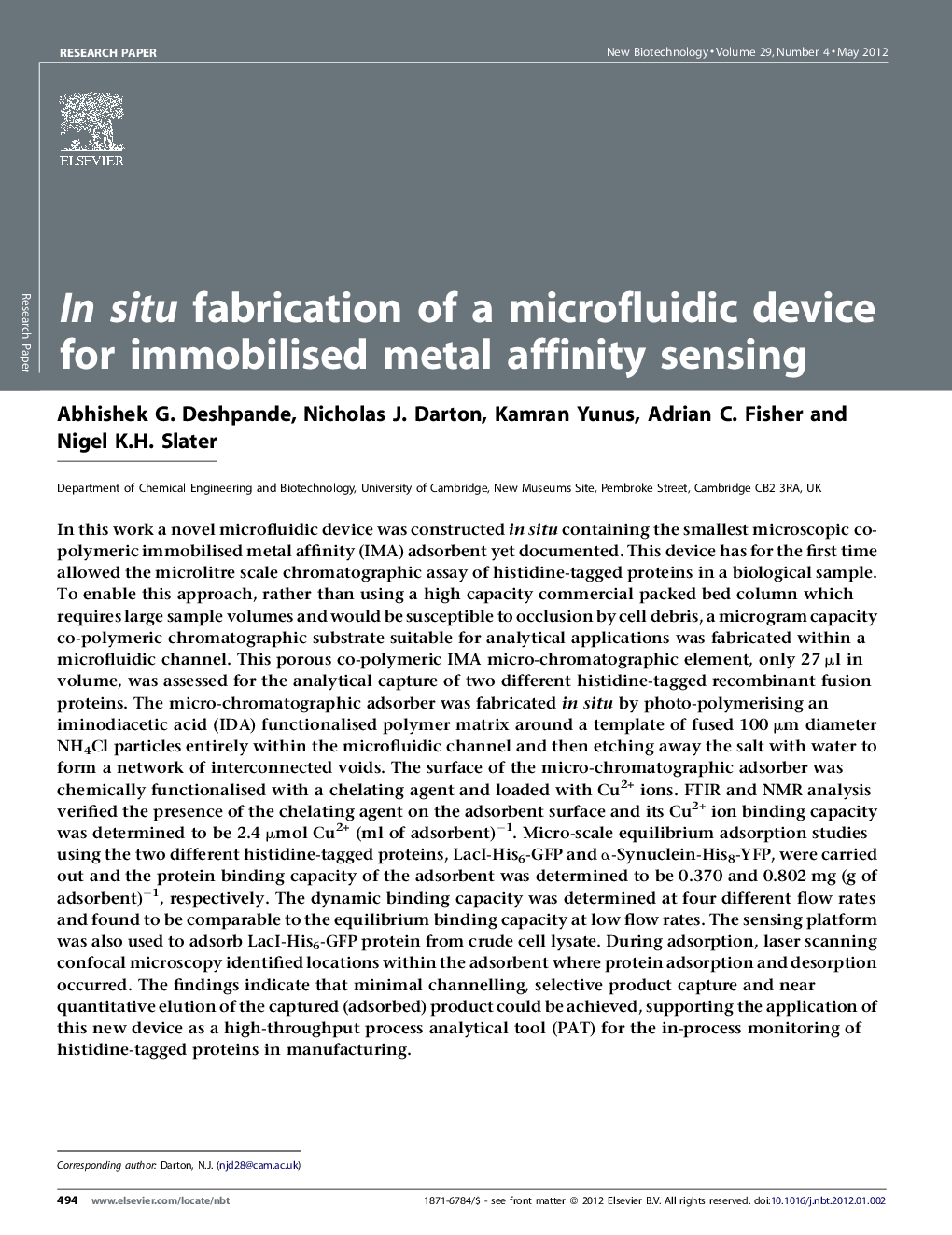| کد مقاله | کد نشریه | سال انتشار | مقاله انگلیسی | نسخه تمام متن |
|---|---|---|---|---|
| 33360 | 44973 | 2012 | 8 صفحه PDF | دانلود رایگان |

In this work a novel microfluidic device was constructed in situ containing the smallest microscopic co-polymeric immobilised metal affinity (IMA) adsorbent yet documented. This device has for the first time allowed the microlitre scale chromatographic assay of histidine-tagged proteins in a biological sample. To enable this approach, rather than using a high capacity commercial packed bed column which requires large sample volumes and would be susceptible to occlusion by cell debris, a microgram capacity co-polymeric chromatographic substrate suitable for analytical applications was fabricated within a microfluidic channel. This porous co-polymeric IMA micro-chromatographic element, only 27 μl in volume, was assessed for the analytical capture of two different histidine-tagged recombinant fusion proteins. The micro-chromatographic adsorber was fabricated in situ by photo-polymerising an iminodiacetic acid (IDA) functionalised polymer matrix around a template of fused 100 μm diameter NH4Cl particles entirely within the microfluidic channel and then etching away the salt with water to form a network of interconnected voids. The surface of the micro-chromatographic adsorber was chemically functionalised with a chelating agent and loaded with Cu2+ ions. FTIR and NMR analysis verified the presence of the chelating agent on the adsorbent surface and its Cu2+ ion binding capacity was determined to be 2.4 μmol Cu2+ (ml of adsorbent)−1. Micro-scale equilibrium adsorption studies using the two different histidine-tagged proteins, LacI-His6-GFP and α-Synuclein-His8-YFP, were carried out and the protein binding capacity of the adsorbent was determined to be 0.370 and 0.802 mg (g of adsorbent)−1, respectively. The dynamic binding capacity was determined at four different flow rates and found to be comparable to the equilibrium binding capacity at low flow rates. The sensing platform was also used to adsorb LacI-His6-GFP protein from crude cell lysate. During adsorption, laser scanning confocal microscopy identified locations within the adsorbent where protein adsorption and desorption occurred. The findings indicate that minimal channelling, selective product capture and near quantitative elution of the captured (adsorbed) product could be achieved, supporting the application of this new device as a high-throughput process analytical tool (PAT) for the in-process monitoring of histidine-tagged proteins in manufacturing.
► New microfluidic device constructed in situ for high-throughput in-process protein monitoring.
► Device contains smallest co-polymeric immobilised metal affinity adsorbent yet documented.
► Microlitre scale assay of a protein sample.
► This micro-chromatographic device was tested for the capture of 2 histidine-tagged proteins.
► Findings indicate minimal channelling, selective capture and near quantitative product elution.
Journal: New Biotechnology - Volume 29, Issue 4, 15 May 2012, Pages 494–501